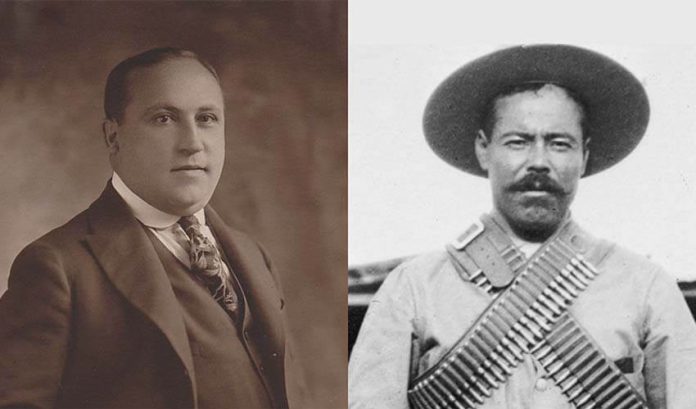From early on in life, filmmaker Stacey Ravel Abarbanel recalls learning about her family’s unique connection to Pancho Villa.
When the Mexican revolutionary raided the town of Columbus, New Mexico, on March 9, 1916 — the only time in the 20th century that the continental United States was attacked by a foreign army — family lore held that one of his motivations was to kill Abarbanel’s grandfather, Sam Ravel.
A Jewish immigrant from Lithuania, Ravel became a prominent merchant in Columbus. During the Mexican Revolution, some say, Villa was Ravel’s client for a weapons deal that misfired. Abarbanel grew up with chilling narratives about the resulting raid.
Although her grandfather was out of town that day, his brothers Arthur and Louis were both present. Arthur claimed he was injured, detained by the Villistas, then miraculously escaped with his life.
Abarbanel explores her family’s role in the narrative of Columbus in her new film UnRaveling.
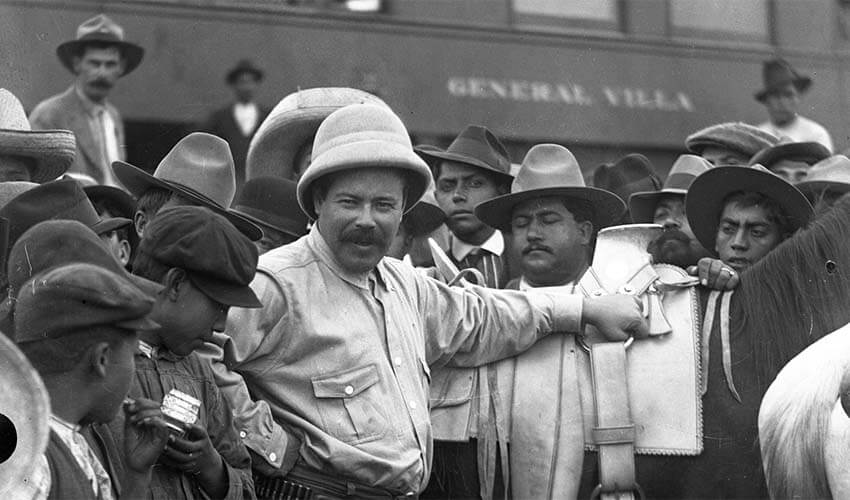
“I think my family was incredibly lucky that day,” Abarbanel said. “My grandfather Sam was very fortunate he was not in town …”
Several weeks ago, it made its world premiere at the Doc LA film festival, where it won the best mid-length documentary award. It was most recently streamed at the Hanukkah Film Festival on November 28.
Villa himself appears in archival photos and footage, and Abarbanel travels to Columbus in 2020, during the annual commemoration in March, days before the first COVID-19 case in New Mexico and the state’s subsequent shutdown.
“The most interesting part of the narrative is how the people in the border region continue to tell, to this day, what happened in the raid,” she said. “They very much have their own way … they really keep this narrative alive for themselves.”
She filmed a unique group of equestrians who travel hundreds of miles from Mexico for the commemoration each year — the Cabalgata Binacional Villista. One member of the group — Ignacio Montoya, who was born in the U.S. and who has worked for American companies in Mexico — says in the film that the group “unite[s] all frontiers.”
“What a dramatic and beautiful moment that is,” Abarbanel said of the Cabalgata. “It runs contrary to a lot of people’s perceptions of the border.”
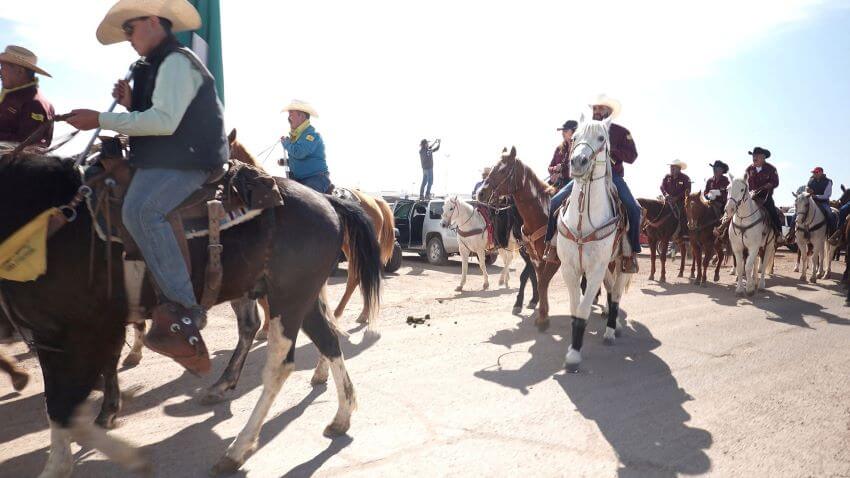
“So often,” she added, “you read really kind of negative news stories about conflict. In this case, you see the border in a really different light.”
Abarbanel originally chronicled her family story in a 2019 article for Tablet magazine entitled “Pancho Villa and My Grandfather.” She then decided to make it into a film.
She wrote the screenplay and produced it with Jeff Swimmer directing. A key step came when she encountered historian William McGaw’s archive of interviews with people from the American Southwest — including her late uncles Arthur and Louis.
“To me, it struck gold,” Abarbanel said. “It was pretty remarkable hearing them telling stories firsthand.”
That included Arthur saying that he was injured during the melee.
“Obviously, it’s something we all heard,” Abarbanel said. “He himself said a bullet whizzed by his ear … it speaks to how family lore gets passed down, accurate or not.”
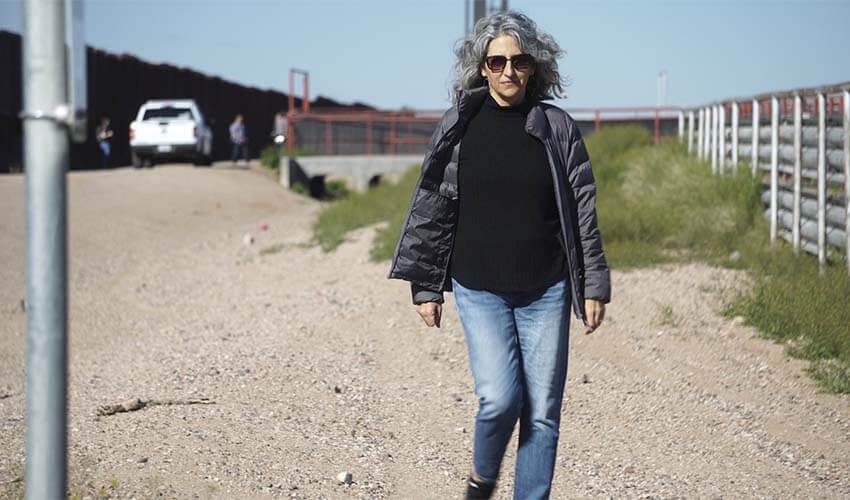
Throughout the project, Abarbanel had to unravel differing versions of the story — including about why Villa might have targeted her grandfather in the first place.
“Of the stories that get told about my grandfather Sam,” she said, “all are in the context of an arms deal that went wrong. There are various versions I can find … I have no way of knowing which version of the story is true.”
And, she said, “I always try to be very clear with everyone when I hear people repeating this story. A lot of people in reputable history books, serious historians, present many reasons [why] Villa raided the town.”
At that point, her grandfather had been in Columbus for nearly six years, and in the U.S. for over a decade.
Originally from eastern Europe, he had landed in America on September 11, 1905, on a ship that docked at Galveston. Abarbanel describes his narrative in the American Southwest as differing from perceptions that Jewish immigration to the U.S. was centered in New York.
“In the 19th and early 20th century, there were a small number of individuals, Jewish immigrants, who made their homes in the Southwest, including my grandfather,” she said. “They lived their lives very differently … In the case of my grandfather, he came here a Yiddish speaker, but he and his brothers had to learn English and Spanish.”
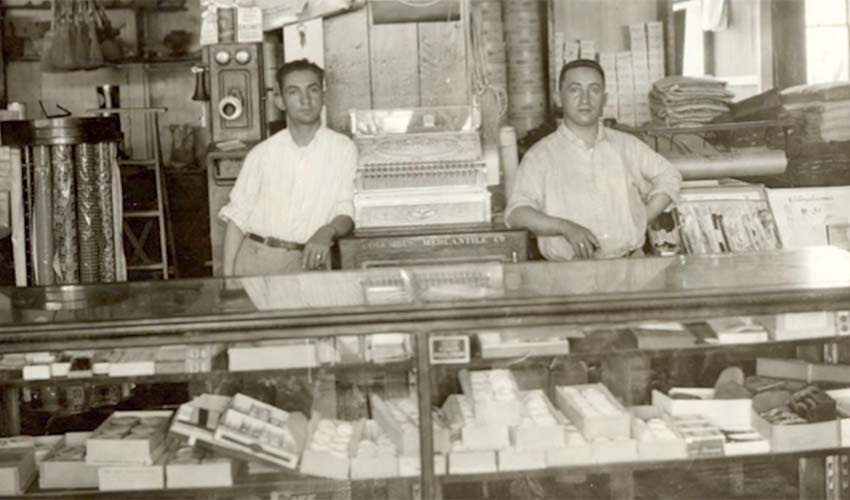
In Columbus, Sam was soon running or helping to run several businesses — the Commercial Hotel, the town’s first movie theater and a general store. Eventually, he saved up enough money to bring both of his brothers there.
The general store became a family enterprise where a visitor could get everything from milk to bullets.
“[Sam Ravel] arrives in November 1910, right around when most historical perspectives [date] the start of the [Mexican] Revolution,” Abarbanel noted. “Columbus was a very small town. It had a border crossing with the international town of Puerto Palomas.
“What little I was able to glean from his business dealings is that a major part … was doing business in Mexico. In 1914, he delivered goods down there to revolutionaries … He was arrested. The U.S. government intervened to get him out.”
According to the film, the goods included firearms — a Colt pistol plus three rifles — as well as 180 rounds of ammunition. Another controversial arms deal allegedly took place two years later between Ravel and Villa in the lead-up to the raid on Columbus.
Regardless of why Villa attacked the town, the early morning hours of March 9, 1916, were terrifying for the population of Columbus — including the Ravel family.
As Arthur relates in the oral history recording, his brother Louis hid under the bed while he himself was apprehended by the Villistas. They demanded that he take them to Sam.
But Sam was in El Paso for a medical appointment. They did not believe him.
Although the Villistas killed a total of 19 Americans, they spared Arthur’s life while hunting for his brother. Ultimately, U.S. forces drove out Villa’s men, killing 75 of them.
The government of President Woodrow Wilson subsequently ordered a military force led by General John Pershing into Mexico to find Villa. The influx of troops created a boomtown in Columbus and briefly made it the state’s largest city.
Yet Pershing returned months later after a failed pursuit.
Arthur says in the recording that while the family did business with other revolutionaries, it never did so with Villa.
“My uncle sort of disavowed that the Ravels had any dealings at all with the Villistas,” Abarbanel said. “It’s very, very likely they did do business with the Villistas.”
Even if the details remain hard to pin down, Abarbanel’s film fulfills its title goal of unraveling a family mystery.
“All I really want for the film is to reach as big and broad an audience as possible,” she said. “It’s just at the beginning of the screenings of the movie. I hope it continues for a long time.”
Rich Tenorio is a frequent contributor to Mexico News Daily.
